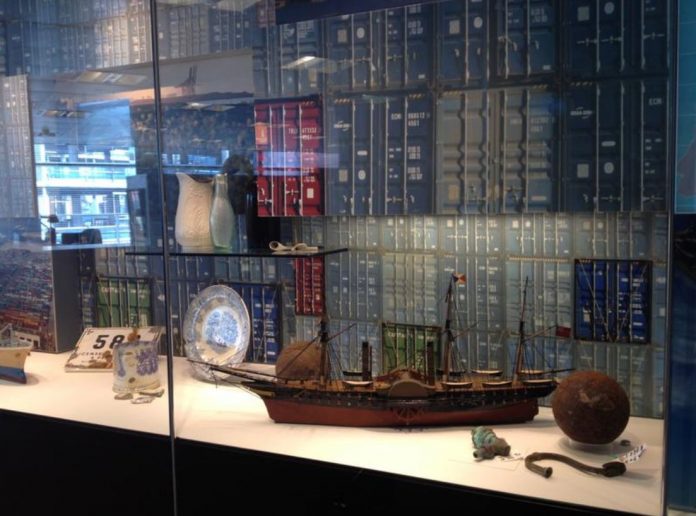Wessex Archaeology has been working with DP World, above and below the water, for over a decade, in a partnership which has been praised for its ground-breaking approach to investigating and understanding the country’s long history with the River Thames. We have conducted
desk-based research,
geophysical surveys,
diver investigations and on-board
watching briefs, and operated a
Protocol for any stray or unexpected finds not picked during our initial surveys; and we have
published the results of our investigations.
The archaeology of the Thames is complex, and many known and previously undiscovered wrecks and artefacts were encountered during the project. Our work has seen the careful investigation of
aircraft wrecks, and numerous shipwrecks – ranging from the
Elizabethan Princes Channel Wreck (investigated for the Port of London Authority) to the SS
Letchworth, lost during the Second World War – as well as odd (and sometimes surprising) artefacts lost to the seabed.
Some of the finds have recently gone on display at
DP World’s Europe and Russia Regional head office in central London, where they have been carefully curated by Beth Ellis, who is part of a team that oversees the
P&O Heritage Collection for DP World. The finds, including cannonballs, pottery from the site of a paddle steamer, and an art deco taxi licence plate, help to draw visitors’ attention to the work undertaken by DP World and Wessex Archaeology, and to engage them with the region’s rich maritime heritage.
Beth says: ‘The pieces of crockery from the paddle steamer look great and have the added novelty of coming from a paddle steamer similar to those P&O used to own and run, like the William Fawcett (launched in 1828), traditionally known as P&O’s first ship.’
Moving these finds from our stores to an exhibition means that they can now be seen by thousands of people during their time at DP World’s London office, and Wessex Archaeology is proud to support the display. In time, more of the artefacts recovered will be displayed in Southend Museum so that they can be viewed by the wider public, and where they will form part of an education programme for local schools and colleges.
By Gemma Ingason


